About European bison
History
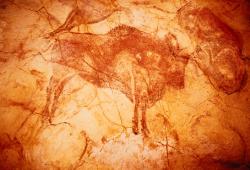
The European bison (Bison bonasus), also called the wisent, is the largest herbivore in Europe . Historically it was distributed throughout western, central, and south-eastern Europe , as well as the southern of Sweden . Habitat degradation and fragmentation due to agricultural activity, forest loggings, and unlimited hunting and poaching, were the primary reasons for the decrease and extinction of European bison populations.
By the end of the 19th century, there were only two populations of European bison left in the wild; in Bialowieza (B. b. bonasus) and in the West-Caucasus Mountains (B. b. caucasicus). The last wild B. b. bonasus was shot in 1919, and the last B. b. caucasicus in 1927. After the extinctions in the wild, some individuals survived in a few European zoological gardens. Together there were only 54 (29 males; 25 females) European bison with proved pedigrees originating from 12 ancestors (or founder animals).
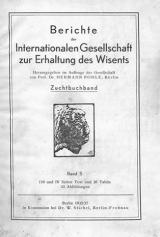
The concept of restoring the European bison using animals kept in zoos originated in several countries and was publicly presented for the first time by Polish zoologist J. Sztolcman at the 1st International Congress of Nature Protection in Paris , 1923. The European Bison Pedigree Book (EBPB) was created in 1932 as a tool to manage the remaining population by registration of all individuals.
The population increased slowly until World War II, when it dropped from 160 animals to 93 in 1946. The reintroduction of captive European bison into the wild started in 1952 and by 1960 a reproducing population was established in the Bialowieza forest in Eastern Poland . Since 1946 the population has increased, except from a temporary decline in the 1990s to 2000. Today the total population of European bison is approximately 3,200 of which 1,400 live in captivity. As a result of the reintroduction programs it now lives free-ranging and semi-free herds in Poland , Lithuania , Belarus , Russian federation , Ukraine and Slovakia , and today the species is classified as Vulnerable on the IUCN Red List of Threatened Species.
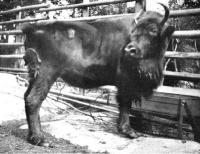
European bison in Sweden
The European bison lived in the southern of Sweden , up to Östergötland until the 11th century. By 1910 it came back in the form of the bull “Odin” to Skansen, Stockholm from Berlin . More animals joined him in 1916, “89 Bilma” and “87 Bill” which later turned out to be two of the 12 founder animals from which the current population descends from. Their offspring, two cows “93 Biserta” and “161 Biscaya”, were sent to Bialowieza 1935 along with their mother Bilma to be a part of a breeding programme with the aim to reintroduce the European bison to the wild.
Today there is seven places in Sweden which hold European bison; Avesta Visentpark, Borås Djurpark, Lycksele Djurpark, Kolmården, Skansen, Skånes Djurpark and Eriksberg Vilt- och Naturpark.
Biology
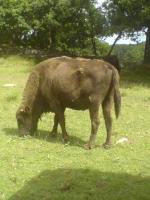
The European bison exists primarily in small or very-small free-ranging and captive herds, numbering about 2900 ( 1700 in free or semi-free conditions) combined in 2000 and is listed as endangered on the IUCN Red List of Threatened Species. Forest complexes with a mosaic-like forest type arrangement (Białowieża and Borecka Forests , Poland ) are most favourable. In fresh deciduous forest, European bison find food throughout the vegetative season. Studies on the European bison’s feeding habits, conducted mainly in Białowieża Forest , showed that the European bison’s diet in the Polish part of Białowieża Forest includes 131 plant species, with 27 species of trees and shrubs, 14 species of grasses and sedges and 96 species of dicotyledonous forbs. In the total diet, trees and shrubs constitute 33%, while grasses, sedges and herbs feature at 67%. Analysis of the rumen contents has confirmed that the European bison’s basic diet contains grasses, sedges and herbs, constituting 90% of rumen capacity, while trees and shrubs only constitute 7–13%. As ruminants, European bison have adapted to use a variety of vegetable food. High food demand means that European bison roam the forest continuously. It has been established experimentally that calves up to 1 year of age eat 8.5kg of fresh food every day, the young (2–3 years old) 19.5–28.5kg and adults 23–32kg.
European bison’s daily activity rhythm is polyphase and thus typical of other ruminants; phases of foraging alternate with resting spent mostly on rumination. In the summer period, the main phases of European bison daily activity rhythms are highly synchronised in the group, thus confirming the consolidation of the herd as a structural unit of the population. Common feeding in the group allows utilisation of the European bison’s food strategy based on active feeding during movement. In the vegetative season, European bison spend approximately 60% of their daily activity on feeding, 30% on resting, and the remaining 10% on roaming without feeding. A reverse situation can be observed in winter, when European bison are additionally fed with hay and spend about 30% of their daily activity feeding, 60% resting and the roaming time is the same.
The European bison is a gregarious animal. Mixed groups and bull groups are the basic units observed. Mixed groups contain cows, young aged 2–3, calves and temporarily adult bulls. The average size of mixed groups is environment-dependent. As a rule, groups consist on average of 8–13 animals in different populations. Groups of bulls in all populations are small and contain two animals on average (1–11). More than half of the males lead a solitary life. Groups of European bison are not family units. The size and structure of mixed groups change, some of the changes being seasonal (calving, joining of bulls in the rutting period), others for behavioural reasons. Groups meet frequently, combine and then quickly split exchanging some of the individuals. European bison movements are connected mainly with feeding activity and ensure optimum use of food supply.
Habitat utilisation by European bison depends on group size and structure, habitat preferences, and rotational exploitation of the environment, which prevents overgrazing. Further, the size of bull home ranges is correlated with their age, older bulls have on average 84.3km2 and younger bulls (5-6 years old) 44km2. Bulls inhabiting the forest periphery occupy the largest home ranges (136.5 and 151.6km2). The maximum cow home ranges cover approximately 100km2. Winter home ranges of bulls are larger than those of cows (10.7km2 and 7.9km2 respectively), and are correlated with duration of permanent snow cover and mean winter temperature.
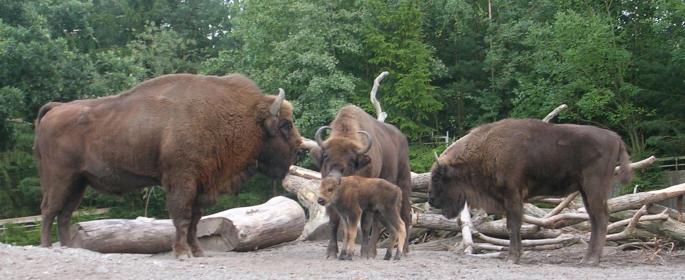
References
- IUCN - SSC Species Action Plan (scroll down the page for European Bison: Status Survey and Conservation Action Plan)
- Skansen
Responsible for this page:
Director of undergraduate studies Biology
Last updated:
06/01/09
